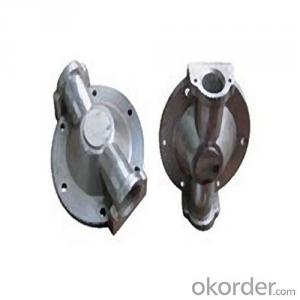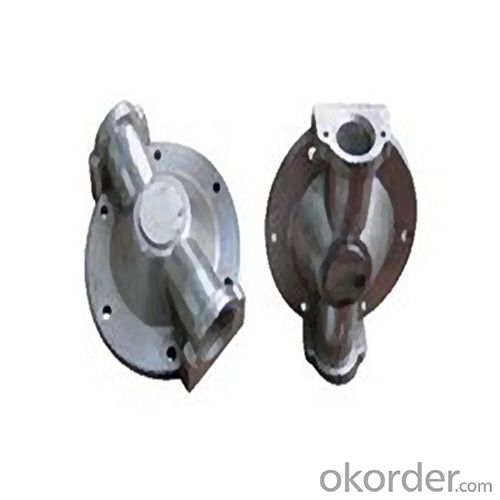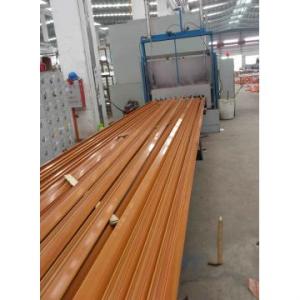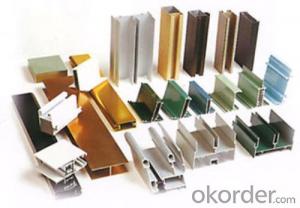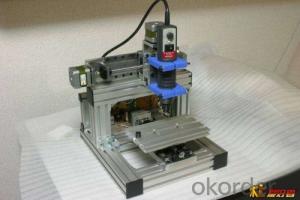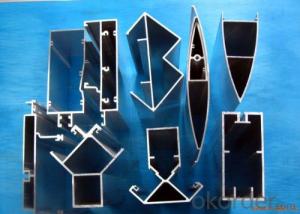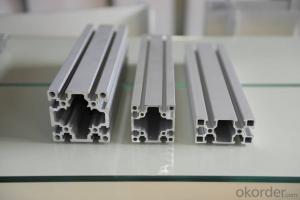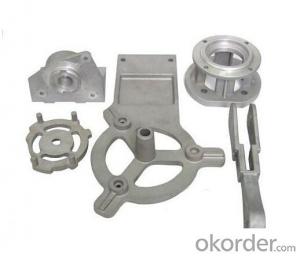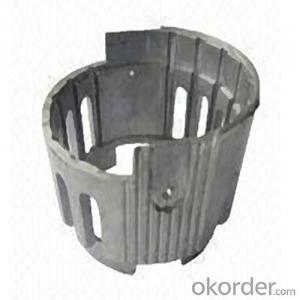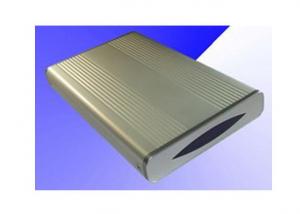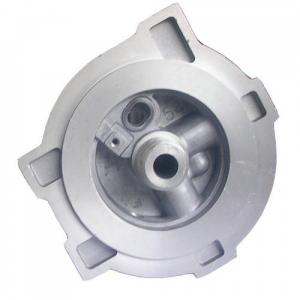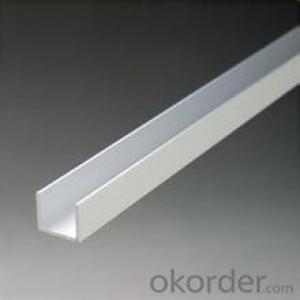High Quality Aluminum Standard Profiles Die Cast Aluminum Enclosure
- Loading Port:
- Guangzhou
- Payment Terms:
- TT OR LC
- Min Order Qty:
- 100 pc
- Supply Capability:
- 100000 pc/month
OKorder Service Pledge
OKorder Financial Service
You Might Also Like
1.Structure of Die Cast Aluminum Enclosure Description:
Die Cast Aluminum Enclosures are from 150 ton to 2500 ton which provide the wide range of cast part sizes from 0.4” square to over 2’ square. Our world class tooling technology offers solid tools and the plenty experiences of casting parameters control that make our casting parts are accurate, durable and exquisite to compare with the other workmanship. Our competitive offshore price and short first article lead time delivers the fast success of your project.
2.Main Features of the Die Cast Aluminum Enclosure:
·can be easily installed or moved.
·Free from corrosion and carry superior insulation.
·passed waterproof and dustproof carried out under rigid quality standard
·The use is also convenient for the installation of Terminal Substitution Rail, Button Box, Small Terminal,Signal , Relay and Sensor
3. Die Cast Aluminum Enclosure Images
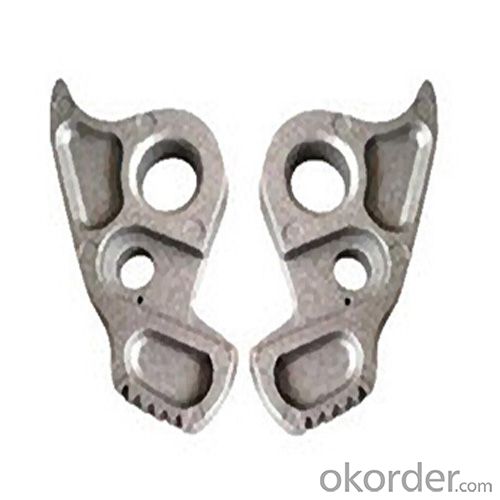
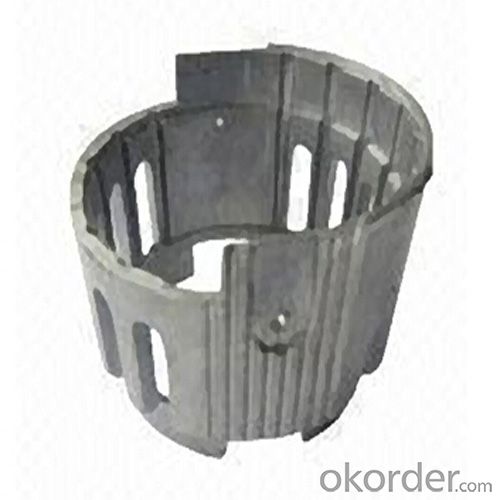
4. Die Cast Aluminum Enclosure Specification
Product Class: | die cast aluminum enclosure | ||
Material: | Aluminum & Aluminum alloy A360, A380, A356, ADC12,ADC10, | ||
weight | 0.02-15 kg ( Tolerance :+/- 0.5mm) | ||
Manufacture Process | 1) Process: die cast aluminum enclosure/Metal alloy die casted parts /gravity casting products 2)Secondary Machining: CNC turning, milling, drilling, grinding, assembly to Packing 3) Surface Finish: Chrome plating, sandblasting, painting, anodizing, powder coating, electrophoresis | ||
Surface Treatment | 1)Sand blasting 2)Zinc/chrome plating 3)Powder coating 4)Anodizing 5)Oil injection 6)Brush .etc | ||
Production usage
| 1)Auto parts casting 2)Motorcycle parts 3)Chair parts 4)Locomotive parts 5)Machinery parts 6)Tool parts 7)Radiator 8)Die cast aluminum enclosure .etc | ||
Service | OEM/ODM service are welcomed | ||
Competitive advantage | 1) Small quantity order acceptable 2)Very tight tolerance. 3)Advanced equipment, excellent R&D teams. 4)Strict quality control system. 5)Professional technics and rich experience. 6)Packaging details as client required. | ||
Certification | ISO9001/TS16949,ISO14001,7S |
5.FAQ
1.What is your mOQ?
1000pieces
2. How about your delivery time?
About one month
3.How to order?
First,Customers could send us your sample or drawing,such as 2D and 3D drawing(IGS or STP format) Second,Our engineers will check the drawing carefully and then provide you a better price. Third, If you accept, then order confirmed.
- Q: How do aluminum profiles compare to plastic profiles?
- Various industries commonly use aluminum profiles and plastic profiles for different purposes. When comparing these two materials, there are several factors that need consideration. Strength and durability are important factors to consider. Generally, aluminum profiles are stronger and more durable than plastic profiles. Aluminum possesses high tensile strength, enabling it to withstand heavy loads and resist deformation. Conversely, plastic profiles are more prone to cracking or breaking under excessive stress. Another factor to consider is weight. Aluminum profiles are heavier compared to plastic profiles. This characteristic can be advantageous or disadvantageous depending on the specific application. The weight of aluminum can provide stability and strength, while the lightweight nature of plastic makes it easier to handle and install. Corrosion resistance is also a significant aspect to examine. Aluminum profiles exhibit excellent corrosion resistance properties, enabling them to endure exposure to various environmental conditions. This makes them suitable for outdoor applications. In contrast, plastic profiles are not as resistant to certain chemicals or UV radiation, which can cause degradation over time. Flexibility and design are important considerations as well. Plastic profiles offer greater design flexibility compared to aluminum profiles. Plastic can be molded easily into complex shapes and customized to meet specific requirements. Aluminum, although less flexible, can still be shaped or extruded into different profiles within certain limitations. Thermal and electrical conductivity should also be taken into account. Aluminum profiles have superior thermal conductivity, allowing them to dissipate heat more effectively. Consequently, they are often used in applications where heat dissipation is critical, such as electronics or heat sinks. Plastic profiles, on the other hand, have lower thermal conductivity and are less suitable for such applications. Cost is another factor to consider. Generally, plastic profiles are more cost-effective than aluminum profiles. The manufacturing process for plastic profiles is simpler and cheaper, resulting in lower production costs. Conversely, aluminum profiles require more advanced manufacturing techniques and additional finishing processes, making them relatively more expensive. In conclusion, the choice between aluminum and plastic profiles depends on the specific requirements of the application. Aluminum profiles offer superior strength, durability, and corrosion resistance, making them suitable for heavy-duty or outdoor applications. On the other hand, plastic profiles provide more design flexibility and cost-effectiveness, making them ideal for lightweight or customized applications.
- Q: Can aluminum profiles be used in the production of industrial robots?
- Yes, aluminum profiles can be used in the production of industrial robots. Aluminum is a lightweight and durable material that offers several advantages for constructing robotic systems. It has a high strength-to-weight ratio, making it suitable for building rigid and reliable robot structures. Aluminum profiles can be easily machined, allowing for precise and intricate designs to be created for various robot components such as frames, arms, and joints. Additionally, aluminum is corrosion-resistant, which is beneficial in industrial settings where robots may be exposed to harsh environments or chemicals. Overall, aluminum profiles provide a cost-effective and versatile solution for manufacturing industrial robots.
- Q: Are aluminum profiles suitable for material handling equipment?
- Yes, aluminum profiles are suitable for material handling equipment. Aluminum profiles offer several advantages that make them an ideal choice for material handling applications. Firstly, aluminum is lightweight yet strong, which makes it easier to handle and transport materials. This is especially beneficial for equipment that needs to be maneuvered or transported frequently. Secondly, aluminum profiles have excellent corrosion resistance properties, making them suitable for both indoor and outdoor material handling applications. This durability ensures that the equipment can withstand harsh environments and maintain its structural integrity over time. Additionally, aluminum profiles can be easily customized and assembled to create various types of material handling equipment, such as carts, conveyors, and shelving systems. The versatility of aluminum profiles allows for flexibility in design and adaptability to different material handling requirements. Furthermore, aluminum is a sustainable material as it is 100% recyclable. Choosing aluminum profiles for material handling equipment aligns with environmentally friendly practices and reduces the carbon footprint. In summary, aluminum profiles are indeed suitable for material handling equipment due to their lightweight yet strong nature, corrosion resistance, versatility in design, and sustainability.
- Q: What are the industries that require aluminum profiles in industry?
- 1, transportation (including automobile manufacturing, rail transportation).2 equipment and machinery manufacturing.3) durable consumer goods (including light industries).4, transportation, equipment and machinery and equipment manufacturing, durable consumer goods industry, respectively, in China's aluminum profile applications accounted for about 10%, 10% and 12%. While in Europe, North America and Japan aluminum consumption structure, industrial consumption ratio reached 60%, 55% and 40%, much higher than in China. It is expected in the next 5~10 years, China's consumption of aluminum industry will continue to grow in the aluminum products in the proportion of about 30% up to 2015 about 45~50%.5, aluminum plating process, which belongs to the coating technology it is pre plating and electroplating process steps to increase on the basis of conventional Ti process, aluminum is the process of the aqueous solution of salt and hydrochloric acid in the plating after activation of chemical treatment; electroplating bath composition including sulfur acid nickel, nickel chloride, boric acid twelve, sodium lauryl sulfate, saccharin, brightener, this process has the advantages of simple, practical and good effect, the titanium aluminum prepared by the hardness of the film is HV 1500, under the same conditions than the 22 carat gold plating wear 150 times, can be processed into various forms, golden color, black and bright various series of aluminum products.
- Q: How are aluminum profiles insulated?
- Aluminum profiles are typically insulated using a thermal break system. This involves placing a non-conductive material, such as polyamide or polyurethane, between the inner and outer sections of the aluminum frame. This insulation helps to reduce heat transfer and improve energy efficiency in buildings.
- Q: Are there any special considerations for installing aluminum profiles?
- Yes, there are several special considerations for installing aluminum profiles. Firstly, it is important to ensure that the profiles are properly aligned and leveled during installation. This is crucial for achieving a seamless and professional-looking finished product. Using a laser level or a spirit level can help in this process. Secondly, it is essential to use the correct type and size of fasteners when installing aluminum profiles. Stainless steel or aluminum screws or rivets are commonly used, as they are resistant to corrosion and provide a secure hold. Additionally, it is important to pre-drill holes in the profiles to prevent cracking or splitting. Another consideration is the expansion and contraction of aluminum due to temperature changes. Aluminum has a high coefficient of thermal expansion, so it is necessary to leave enough space for the profiles to expand and contract without causing damage. This can be achieved by leaving a small gap between the profiles during installation. Furthermore, it is important to take into account the weight of the profiles and the load they will be subjected to. If the profiles are intended to support heavy loads or structural components, additional support or reinforcement may be required. Lastly, it is crucial to follow the manufacturer's instructions and guidelines for installation. Each type of aluminum profile may have specific requirements, such as recommended installation techniques or maximum spans between supports. Adhering to these guidelines will ensure a safe and secure installation. In conclusion, installing aluminum profiles requires careful attention to alignment, fasteners, expansion and contraction, load considerations, and following manufacturer's instructions. By considering these factors, one can ensure a successful and long-lasting installation.
- Q: Explain the positive environmental impacts of utilizing recycled aluminum in the construction industry.
- <p>Using recycled aluminum in construction offers significant environmental benefits. It conserves natural resources by reducing the need for mining new bauxite, the primary source of aluminum. This reduction in mining decreases habitat destruction, water pollution, and soil erosion. Additionally, recycling aluminum saves energy, as it requires only 5% of the energy needed to produce aluminum from raw materials. This energy conservation leads to lower greenhouse gas emissions and air pollution. Moreover, the use of recycled aluminum reduces landfill waste, as less material ends up in landfills. Overall, it promotes a more sustainable and eco-friendly construction process.</p>
- Q: Can aluminum profiles be used in the construction of modular office spaces?
- Yes, aluminum profiles can definitely be used in the construction of modular office spaces. Aluminum profiles are lightweight, durable, and have excellent structural integrity, making them an ideal choice for modular construction projects. They can be easily fabricated and assembled to create various components such as walls, partitions, doors, windows, and framing systems for modular office spaces. Additionally, aluminum profiles offer great design flexibility, allowing for customization and adaptation to different office layouts and requirements. They are also highly resistant to corrosion, which is particularly beneficial in office environments where moisture and humidity can be present. Overall, aluminum profiles provide numerous advantages in terms of strength, versatility, and aesthetics, making them a popular choice for construction in modular office spaces.
- Q: This question asks for a list of various types of fasteners that can be used with aluminum profiles specifically designed for outdoor applications.
- <p>Aluminum profiles for outdoor applications commonly use several types of fasteners to ensure secure and durable connections. These include: 1. T-nuts and T-bolts, which provide a strong and hidden connection within the profile. 2. Clamping blocks or plates, which are used for external fastening and can be easily adjusted. 3. Corner brackets, which are used to connect profiles at right angles. 4. Hinges, which allow for pivoting movements in doors or gates. 5. Screws and bolts, which are versatile and can be used in various configurations. 6. Adhesives, which can provide a strong bond in certain applications where mechanical fasteners are not suitable. 7. Rivets, which offer a permanent connection once installed. Each type of fastener is chosen based on the specific requirements of the outdoor structure, such as load-bearing needs, resistance to weather, and aesthetic considerations.</p>
- Q: What specific considerations should be taken into account when using aluminum profiles in extreme temperatures, be it cold or hot?
- <p>Aluminum profiles are generally durable and can withstand a wide range of temperatures. However, in extremely cold climates, thermal contraction can occur, potentially leading to gaps or cracks. It's important to allow for expansion and contraction in the design. In hot climates, while aluminum doesn't lose strength, it can expand and warp if not properly supported. Additionally, it can become hot to the touch, which may require protective measures to prevent burns. Always ensure that aluminum profiles are of high quality and are designed for the specific climate conditions they will be exposed to.</p>
Send your message to us
High Quality Aluminum Standard Profiles Die Cast Aluminum Enclosure
- Loading Port:
- Guangzhou
- Payment Terms:
- TT OR LC
- Min Order Qty:
- 100 pc
- Supply Capability:
- 100000 pc/month
OKorder Service Pledge
OKorder Financial Service
Similar products
Hot products
Hot Searches
Related keywords
